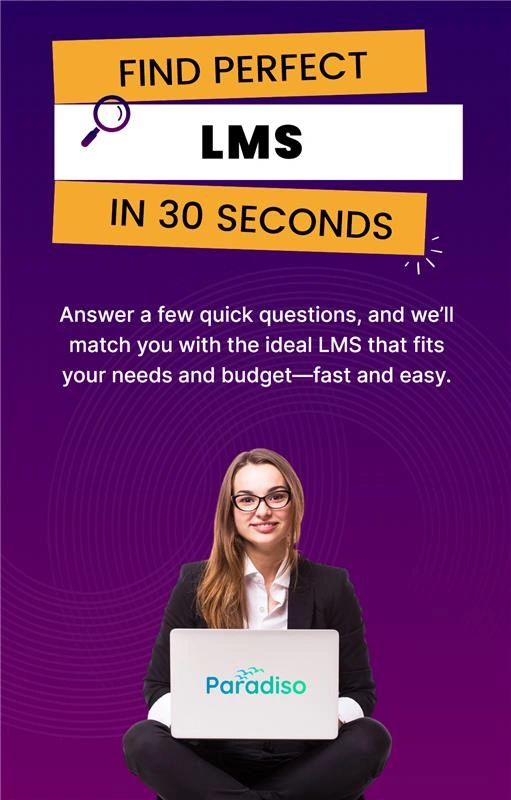Unlocking Creativity with Multimedia Authoring Tools
In today’s digital landscape, compelling content requires more than just text. From videos to interactive e-learning, multimedia engages audiences and elevates ideas. The right authoring tools are essential for this, streamlining complex tasks and unlocking creativity. This guide offers an in-depth overview of the best tools, helping you select the perfect solution to transform your ideas into professional-quality outputs.
Understanding Multimedia Authoring Tools
Multimedia authoring tools are essential software applications that enable content creators, educators, and developers to design and develop engaging digital content. These tools provide a comprehensive platform to integrate various media elements—such as text, images, audio, video, and interactive features—into cohesive, multimedia-rich projects. Understanding their fundamentals is vital for leveraging their full potential across diverse applications like e-learning, marketing, entertainment, and corporate training.
Key Features of Multimedia Authoring Tools
Multimedia authoring tools simplify content creation with features like intuitive drag-and-drop interfaces and timeline-based editing. Advanced tools offer scripting for interactivity, as well as support for animations, transitions, and multimedia embedding. Many also include templates and pre-built components to speed up development and ensure compatibility across different platforms.
Types of Multimedia Content Supported
Professional multimedia authoring software supports a diverse array of content types:
- Videos: Tools enable editing, encoding, and embedding videos for tutorials, presentations, or marketing campaigns.
- E-learning Modules: Facilitate interactive lessons, quizzes, and assessments to enhance engagement and retention.
- Interactive Media: Includes simulations, games, and clickable interfaces that promote active learning and user participation.
- Audio Content: For podcasts, narrations, or sound effects integrated within multimodal projects.
- Animations and Graphics: Visualize complex concepts or create visually appealing interfaces.
Benefits of Using Professional Multimedia Authoring Software
Utilizing dedicated, professional tools offers significant advantages:
- Enhanced Creativity: Advanced features and extensive libraries empower the creation of highly polished, engaging multimedia content.
- Efficiency and Productivity: Streamlined workflows and automation reduce development time, enabling faster project deployment.
- Consistency and Quality: Templates and assets ensure a uniform look and feel, boosting overall quality.
- Interactivity & Engagement: Rich interactive elements foster better user involvement, crucial for e-learning and marketing.
- Cross-Platform Compatibility: Content exported from professional tools functions across devices and operating systems, expanding reach.
- Scalability: Support for large-scale projects and updates is essential for corporate training programs and enterprise content.
Top Multimedia Authoring Tools in 2025
Selecting the right tool is crucial for creating effective e-learning content. As of 2025, several platforms lead the market. This guide examines the top tools—Paradiso Authoring Tool, Adobe Captivate, Articulate Storyline, Camtasia, iSpring Suite, and H5P—comparing their features, pricing, and best use cases to help you make an informed decision.
Paradiso Authoring Tool: AI-Powered and Fully Automated Authoring
Paradiso Authoring Tool is a cloud-based, AI-powered eLearning authoring tool that revolutionizes course creation by enabling users to design and deploy complete, interactive courses in just minutes. The platform is free to start, ensuring seamless access from anywhere, easy collaboration, and automatic updates without complex installations.
The platform comes with pre-built template courses featuring lifelike spokesperson videos, AI-generated voiceovers, quizzes, and rich visual assets—removing the need for extensive manual design work. Beyond authoring, Paradiso Authoring Tool integrates an AI tutor within courses, allowing learners to interact in real time, ask questions, and receive personalized explanations to reinforce understanding.
Its powerful automation capabilities make it ideal for organizations seeking rapid, scalable course production without compromising on engagement or interactivity. From corporate training to academic programs, Paradiso Authoring Tool supports diverse learning formats, enabling educators and trainers to deliver high-quality, interactive learning experiences at scale.
Ideal Use Cases: Rapid course creation, AI-driven learner support, organizations with high-volume content needs, remote collaboration on eLearning projects, cost-effective interactive training.
Multimedia Authoring Tool
Easily combine videos, audio, images, and interactive elements into engaging eLearning courses. Our multimedia authoring tool makes course creation simple and impactful.
Adobe Captivate: Versatile and Feature-Rich
Adobe Captivate continues to be a powerhouse in the multimedia authoring space, renowned for its extensive capabilities in creating responsive, mobile-friendly e-learning content. It excels at developing complex simulations, interactive assessments, and VR-enabled courses, making it perfect for organizations seeking high-end, customizable training solutions. Its integration with Adobe Creative Cloud allows seamless multimedia inclusion, while features like multi-state objects and scripting support sophisticated interactivity.
Ideal Use Cases: Sophisticated interactive courses, mobile learning, VR and AR experiences, scenario-based training.
Articulate Storyline: User-Friendly with Powerful Capabilities
Known for its intuitive, PowerPoint-like interface, Articulate Storyline offers users a rapid development environment with robust interactive features. It supports responsive design, branching scenarios, and third-party content integration. This versatility makes it suitable for various instructional needs, from corporate training to quick turnaround projects.
Ideal Use Cases: Corporate training, onboarding modules, scenario-based learning, quick project delivery.
Camtasia: Focused on Screen Recording and Video Editing
Camtasia stands out as an easy-to-use, effective tool for creating professional videos through screen recording and straightforward editing features. Its robust timeline facilitates producing tutorials, demonstrations, and instructor-led videos efficiently. While it lacks some advanced interactivity of other tools, Camtasia remains highly effective for visual content complementary to other e-learning materials.
Ideal Use Cases: Video tutorials, software demonstrations, internal training videos, quick content creation.
iSpring Suite: PowerPoint-Based with Comprehensive Features
iSpring Suite integrates smoothly with PowerPoint, allowing users to convert presentations into interactive e-learning courses effortlessly. It offers a wide array of features—including quizzes, dialogue simulations, and branching scenarios—making it accessible for educators and training professionals familiar with PowerPoint. Its compatibility with SCORM and xAPI standards ensures effective LMS deployment.
Ideal Use Cases: Blended learning, compliance training, microlearning modules, instructional design for educators.
H5P: Open-Source and Highly Customizable
H5P distinguishes itself as a free, open-source platform capable of creating a variety of interactive content such as quizzes, videos, and timelines. It’s especially suitable for organizations seeking customizable, lightweight, web-friendly content without significant licensing costs. H5P integrates well with LMS platforms like Moodle and WordPress.
Ideal Use Cases: Academic institutions, nonprofits, small businesses, online resource creators seeking flexible content creation.
Explore: Best Free eLearning Authoring tools
Comparative Overview of Tools
| Tool | Best For | Flexibility | Ease of Use | Key Features |
|---|---|---|---|---|
| Paradiso Authoring Tool | AI-powered course creation | High | Easy | Automated content generation, microlearning, interactive videos, LMS integration, SCORM 1.2 & 2004 support |
| Adobe Captivate | Complex, immersive courses | High | Moderate | VR support, mobile responsiveness, simulations, multimedia integration |
| Articulate Storyline | Rapid, engaging courses | High | User-friendly | Branching scenarios, responsive design, LMS integration |
| Camtasia | Video tutorials & demos | Medium | Very Easy | Screen recording, video editing, annotations |
| iSpring Suite | Blended learning, microlearning | Medium | Very Easy | PowerPoint integration, SCORM/xAPI, quizzes |
| H5P | Interactive web content | Moderate | Easy | Open-source HTML5 activities, quizzes, interactive presentations |
Selecting the Right Tool for Your Needs
Choosing the right authoring tool requires evaluating your team’s technical expertise, project complexity, budget, and scalability. For instance, consider Paradiso Authoring Tool for high-end, immersive interactions, or Camtasia for quick video creation. For a powerful, cost-effective solution, H5P is an excellent choice for educators and small teams.
How to Choose the Best Multimedia Authoring Tool for Your Projects
Choosing the right multimedia authoring tool is crucial for project success. This guide helps you make an informed decision by evaluating your needs, skills, and project scope. We will cover key considerations like skill level, project requirements, usability, cost, and licensing.
Assessing Your Skill Level and Project Needs
Start by evaluating your current skills and project objectives.
- Beginner: Limited experience; look for intuitive, drag-and-drop interfaces that simplify workflows.
- Intermediate: Some familiarity with multimedia editing; seek tools balancing ease of use with advanced features.
- Advanced: Extensive experience with multimedia development; require robust functionalities and scripting support.
Understanding your skills helps select a tool that minimizes the learning curve and aligns with your project timelines.
Clarifying Project Requirements
Identify the core objectives of your project:
- Interactivity: Simple slideshows or complex branching scenarios?
- Content type: Videos, animations, quizzes, simulations?
- Output format: Web, mobile, desktop?
- Timeframe: One-off project or ongoing series requiring scalability?
Matching your needs with the software’s features ensures effective resource allocation and project success.
Considering Platform Compatibility
Ensure the platform supports your deployment environment:
- Web Compatibility: HTML5-based content for all modern browsers.
- Mobile Responsiveness: Support for smartphones and tablets.
- Operating System Support: Windows, macOS, or cloud-based solutions accessible across platforms.
- Integration: Compatibility with LMS, CMS, or analytics platforms like Paradiso LMS.
Compatibility issues can lead to increased development time and accessibility challenges, affecting your project outcome.
Evaluating Interface and Usability
A user-friendly interface accelerates development, especially for non-technical users.
- Ease of Use: Visual editors and templates simplify content creation.
- Support: Tutorials, community support, and documentation are essential for troubleshooting.
- Customization: Ability to add multimedia elements and scripting as skills grow.
- Workflow: Supports collaboration, version control, and project management features.
Choosing a platform with intuitive design minimizes training costs and speeds up prototyping.
Analyzing Cost and Licensing Options
Keep budget considerations at the forefront:
- Pricing: One-time purchase, subscription, or open-source?
- Restrictions: Commercial use, user limits, or project scope limitations?
- Additional Expenses: Plugins, templates, training, or support services.
- Free Trials: Use trial versions to evaluate fit before purchasing.
Balancing functionality with affordability ensures sustainable, scalable solutions that meet your project demands.
The Significance of Multimedia and Paradiso LMS
In modern digital education, multimedia content is vital for boosting engagement and knowledge retention. According to the Cognitive Theory of Multimedia Learning, using both visual and auditory channels helps amplify cognitive processing, leading to better long-term retention. This is why interactive videos and simulations are so effective—they make learning active, not passive.
Paradiso LMS enhances this process by seamlessly integrating with top authoring tools like Paradiso Authoring Tool and Articulate Storyline. This ensures that interactive content can be easily uploaded, hosted, and tracked. The platform’s compatibility with SCORM and xAPI standards guarantees that complex learning experiences—from simulations to quizzes—perform reliably and provide comprehensive analytics. This allows educators to leverage data to improve content and measure learning outcomes.
Key Features Supporting Interactive Content Creation
Paradiso LMS provides a suite of tools designed for multimedia and interactive content:
- Drag-and-Drop Content Builder: Simplifies adding multimedia assets without coding.
- Interactive Assessments: Quizzes, drag-and-drop activities, scenario simulations promote active learning.
- Media Library: Extensive repository of images, videos, and assets to accelerate course development.
- SCORM/xAPI Support: Ensures compatibility and detailed learner analytics.
- Mobile Compatibility: Enables learners to access multimedia content anytime, anywhere.
Practical Tips for Educators and Trainers
Maximize multimedia benefits within Paradiso LMS with these strategies:
- Align Content with Objectives: Use multimedia to reinforce key concepts purposefully.
- Keep Content Concise: Short videos and interactive modules retain attention and facilitate comprehension.
- Leverage Authoring Tools: Create rich simulations and scenarios to meet training goals.
- Foster Active Participation: Incorporate interactive elements and gamification to motivate learners.
- Ensure Accessibility: Provide captions, transcripts, and adaptable formats for all learners.
- Use Data Analytics: Monitor engagement metrics via Paradiso LMS to refine and improve content strategies.
By integrating multimedia with Paradiso LMS, educators can create engaging, adaptive learning environments that enhance overall learning outcomes. The platform’s comprehensive tracking and customization features support continuous improvement and learner success.
Conclusion: Elevate Your Content Creation Strategy
A strategic approach to content creation is essential for engaging today’s audiences. This guide has shown the importance of understanding your audience, choosing the right tools, and using best practices to create impactful content. By selecting reliable tools that offer analytics, user-friendly interfaces, and scalability, you can build a strong foundation for long-term success.
To stay competitive, continuously evaluate your workflows and embrace new technologies. For organizations needing advanced e-learning delivery and tracking, solutions like Paradiso LMS can transform your strategy from simple delivery into a dynamic, results-driven learning journey.

















